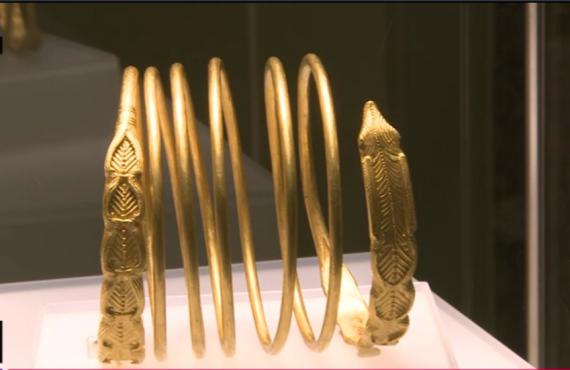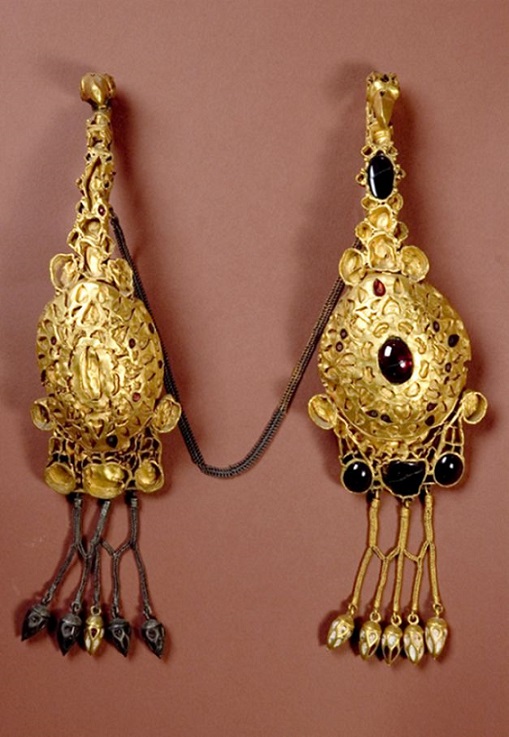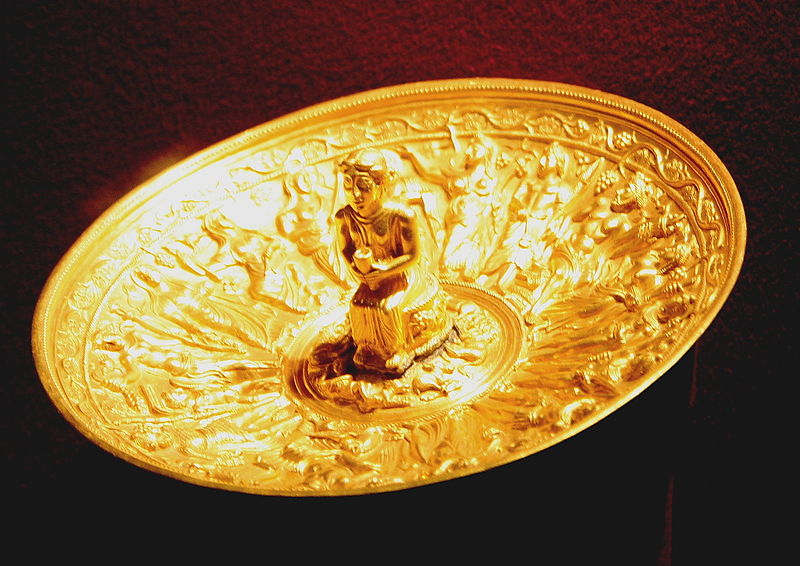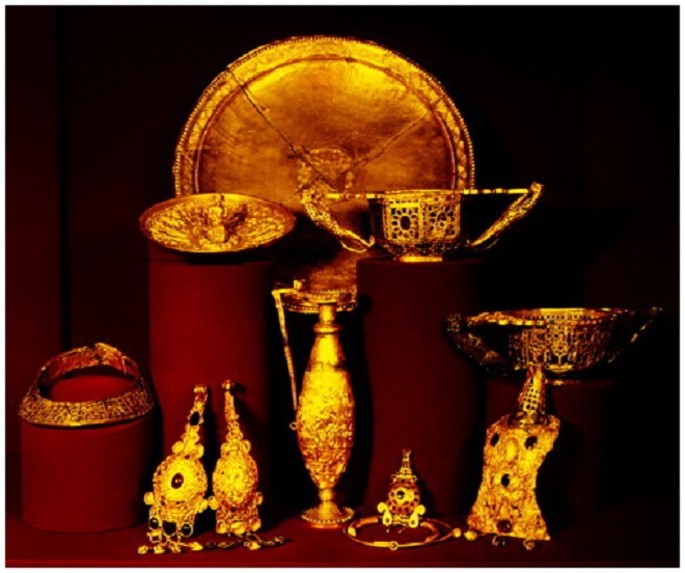The treasure was found by two peasants, Ion Lemnaru and Stan Avram, in Pietroasele, Buzau County. At that time, it comprised 22 items. Unfortunately, it was bought from them by an entrepreneur named Verussi, who shattered the pieces with an axe to make them more compact. The treasure was partly recovered from him by Mihalache Ghica, who was the brother of ruler Alexandru D. Ghica, and brought it to the attention of the scientific world of the time.

The Broody and the Chicks first gained international recognition at The Great Universal Exposition in Paris that took place in 1867, when it was also first restored. Then, at the end of 1875, it was stolen by the Antiquities Museum in Bucharest and was only recovered a year later. But when the pieces were returned, a necklace that contained an important runic inscription was missing.

In 1884, the treasure survived a fire by being thrown out of the window. In the same year, it was restored by Paul Telge in Berlin and gained the appearance it has today.
And finally, in 1917, it was sent to Russia, to be hidden from the Central Powers and only returned to Romania in 1956, again, with two pieces missing. Since 1971, it has been exposed at the National History Museum in Bucharest.

In 2015, the Broody and the chick returned to Buzau, the place where it was discovered, for the first time in two centuries. This event coincided with the opening of the Museum of County Buzau.
The exposition was part of a project that involved thirty one museums all over the country, as well as the National History Museum in Bucharest. It featured over 1000 gold and silver pieces discovered in Romania – jewelry, crockery and coins – and covered 5.000 years of history.

Sources:
opiniabuzau.ro/tezaurul-de-la-pietroasele-din-nou-acas-dup-de-ani ; https://ro.wikipedia.org/wiki/Tezaurul_de_la_Pietroasele
























